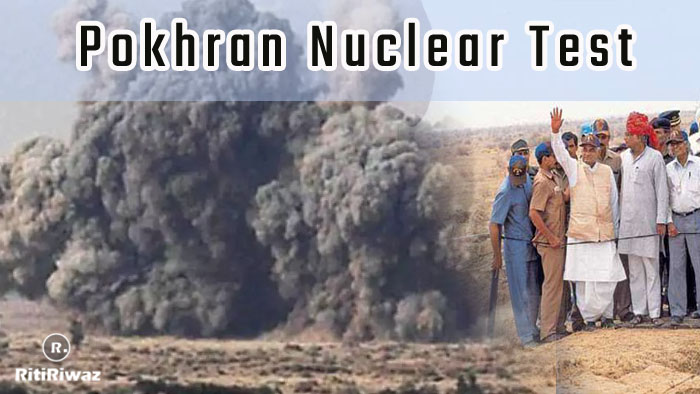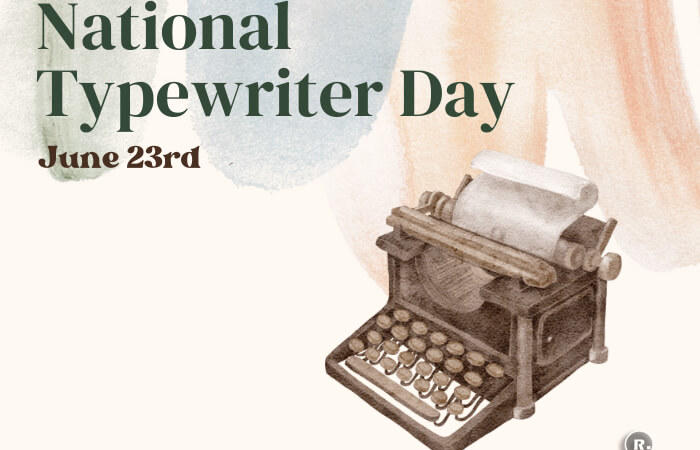Pokhran Nuclear Test

In the year 1998 on the 11th and 13th May, five nuclear tests were conducted at the Indian Army’s Pokhran Test Range. On 18 May 1974, India exploded its first nuclear device code-named Smiling Buddha. After about a quarter-century, on Buddha Jayanti, 11 May 1998, Operation Shakti was carried out. Pokhran Nuclear Test were nuclear tests carried out by India in Pokhran.
Shakti (शक्ति in Sanskrit meaning ‘Strength’), is also the name of the Hindu Goddess of strength. Shakti was the codename for Pokhran-II and was conducted by the Atomic Energy Commission of India and the Defence Research and Development Organisation (DRDO) in Pokhran city of Rajasthan.
Operation Shakti consisted of five detonations of one fusion bomb and four fission bombs and in two groups. Group 1 consisted of 3 nuclear devices (Shakti I, Shakti II, Shakti III), and Group 2 consists of 2 nuclear devices (Shakti IV and Shakti V).
India became the sixth country to have tested nuclear bombs and joined the elite nuclear club in 1998. This test was important because it changed the image of India in front of the whole world. On that day the world understood that India is a rapidly emerging force. And also that no satellite can detect its intentions.
Planning and execution
Extensive planning and defining the Pokhran test range was done by a very small group of scientists, senior military officers and, senior politicians to ensure that the test preparations would remain a secret. India stunned the world by pulling off a big feat in a short time by outsmarting the head of American spy satellites. So, “Buddha Smiled” again on May 11 and 13 of 1998 in India.
The Pokhran Test was popularly referred due to the name of the village at the site which was euphemistically termed by the Indian government as a peaceful nuclear explosion(PNE).
Pokhran is called 5 mirages by local inhabitants because of the five salt ranges surrounding the city. Pokhran is actually an oasis in the middle of the desert. It’s a place where endless sand dunes are observed.
At the time of its occurrence, none of the analysts has a clue to the impending development. Only a selected group of people, who did not even include the minister of defense, knew in advance about the Pokhran test. According to the director of the Bhabha Atomic Research Center (BARC), only six people were present at the crucial meetings in which the decision about the explosion was made. India has prepared the nuclear test with such secrecy and efficient strategy that even USA Satellites were not able to detect them.
The biggest challenge was to survive the American satellite ‘Eye in the Sky‘ and complete the operation which could catch even a person standing on the ground and view was visible even in clouds. It is said that in the field in which the test was to be held, sports activities were organized during the day, a cricket pitch was prepared at the site.
DRDO and Department of Atomic Energy (DAE) scientists would wear army uniforms so that the CIA satellite could not figure out the plan. As soon as Indian scientists detected that the satellite of America and other countries was getting blurred, they would be preparing for excavation work and testing. In fact, to avoid satellite detection, the scientists used to work in the dark of the night. Even the atomic bomb tested in Pokhran, Rajasthan was brought to the city from Bangalore in a non-discreet truck and the truck’s driver was an Indian secret agent.
The Pokhran site was built by the Indian Army Corps of Engineers. It is unclear when the site was built but it shot into the international limelight on 18th May 1974 when the then Indian Prime Minister Indira Gandhi verbally authorized scientists at the Bhabha Atomic Research Centre (BARC) at Trombay to detonate a small and miniaturized nuclear device.
Earlier five units had made preparations for nuclear tests, but each time the US intelligence satellite would take these preparations and the mission would have flopped. From 1982 to 1995, several attempts were made. In 1995, when Prime Minister PV Narasimha Rao started preparing for the test, the satellite caught up, and immediately the then US President Bill Clinton called Prime Minister Rao to stop the test. In 1996, when Prime Minister Atal Bihari Vajpayee’s 13-day government was formed, he approved the preparation of the test. After this, the unit reached there and after taking lessons from earlier mistakes, six test wells and sites were to be built.
India decided to go ahead with the Pokhran-II nuclear tests in 1998, over two decades after the first nuclear test in 1974, Kalam led the technical, organizational and political narratives of the same. Dr. Kalam was an aerospace scientist who later went on to serve as the 11th President of India from 2002 to 2007. India successfully managed to conduct underground atomic bomb tests at Pokhran on 11th May 1998. On 13th May 1998, two more underground atomic bomb tests were conducted, after which the Atal Bihari Vajpayee government announced to the world that India was now capable of being called an atomic power nation.
Suggested Read: Important Days In May






